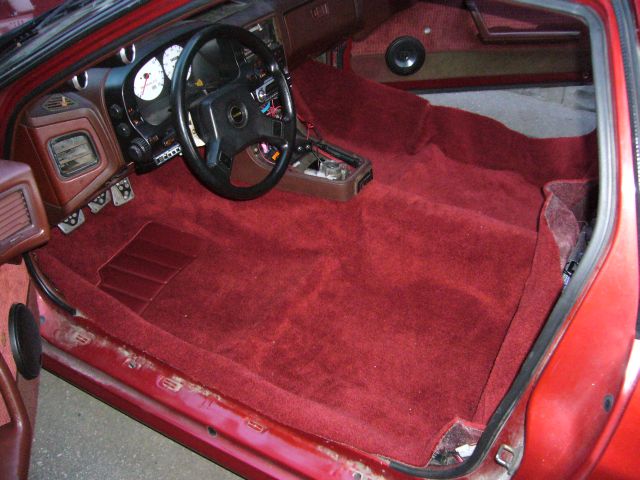| Home > RX-7 > My RX-7 > Project Tina > Project Tina, August 6th: Fan Controller, Brakes, Suspension and Interior |
| Home > RX-7 > My RX-7 > Project Tina > Project Tina, August 6th: Fan Controller, Brakes, Suspension and Interior |
Fitting the driver side seat was easy. All it took was redrilling the stock seat rails and elongating the mounting holes a bit. The seat almost dropped right in.
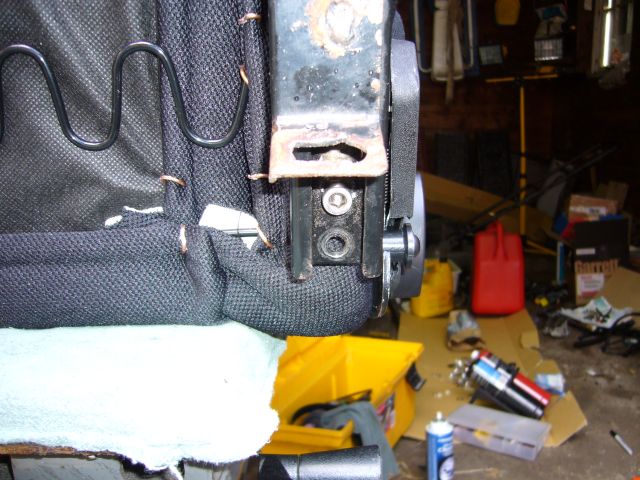
The seat fits fine on the stock brackets but is a bit higher then stock. I'm torn between really liking the new driving position (it allows much easier heel-toe) and thinking it's too high. There are half inch spacers on the seat rails so I can always lower the seat later if I feel it's too high.
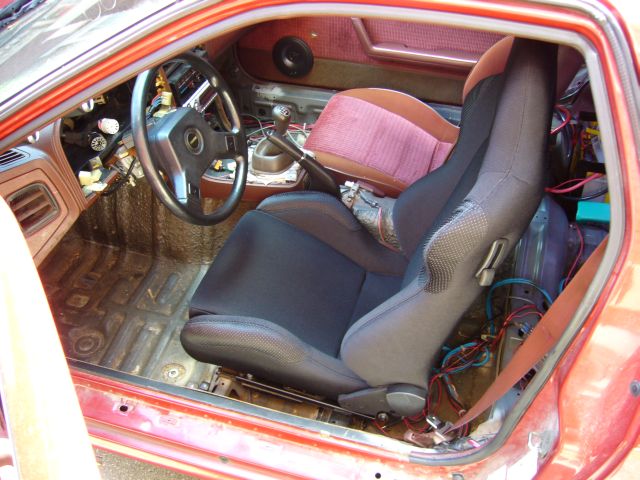
The passenger seat was a bit more complicated. Mazda designed the passenger seat and rail very oddly. The outer mount (closest to the door) is standard. However the inner mount on the transmission tunnel is mounted at an angle and up quite high. The seat then has a matching depression and angled mounts to bolt up. This means that an aftermarket seat with a flat bottom doesn't even come close to fitting. It would have been an easy affair to make a set of spacers to match everything up but that would have raised the seat at least an inch. That was unacceptable as the stock seat is already high enough.
Redrilling the outer rail in the same way the driver side was done took care of one side. I then fit the seat in using the single rail and figured out the angle needed to make a set of tabs. Then, the ends were cut off of the stock inner rail.
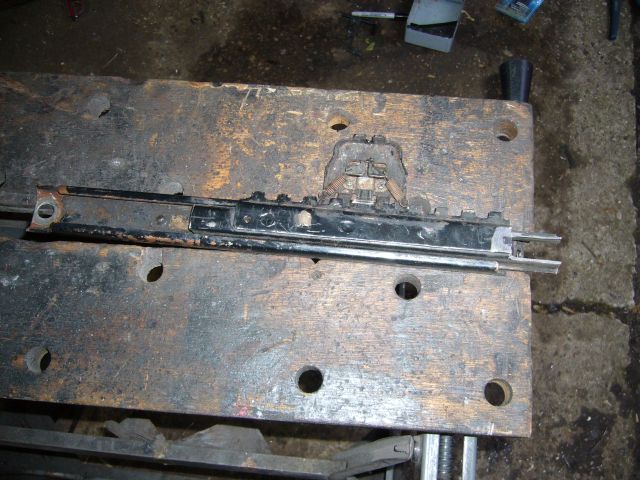
I then made a set of tabs using 1/8" plate.
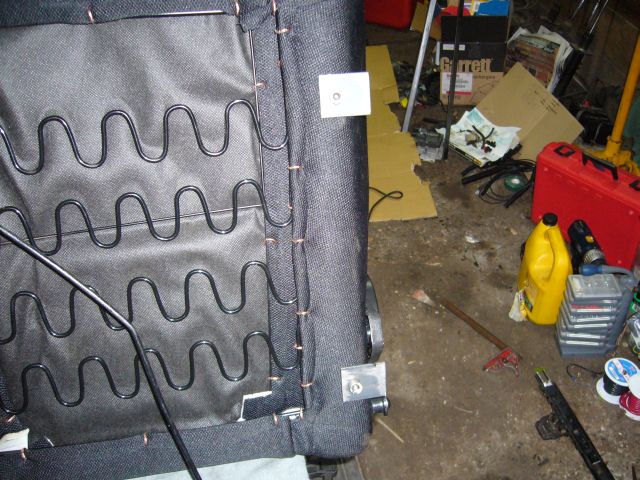
The seat was then installed into the car with the outer rail, while the tabs rested on the inner rail. A bit of careful tack welding secured them. Plenty of wet cloth was wrapped around the area during welding to avoid setting the new seat on fire.
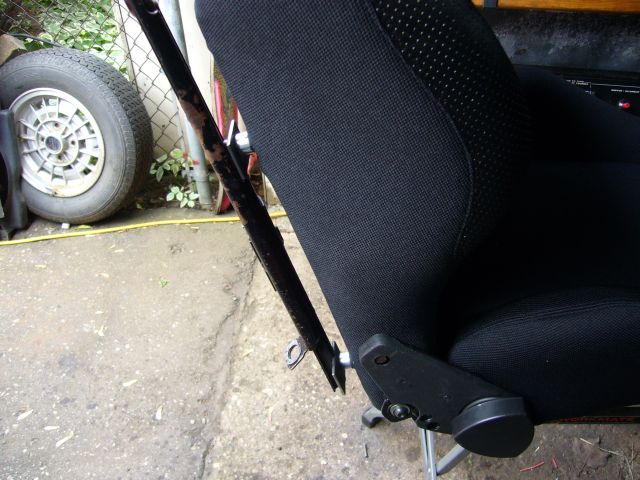
Here's the bottom view of the mounting tabs. You can see the angle of the inner passenger mount.
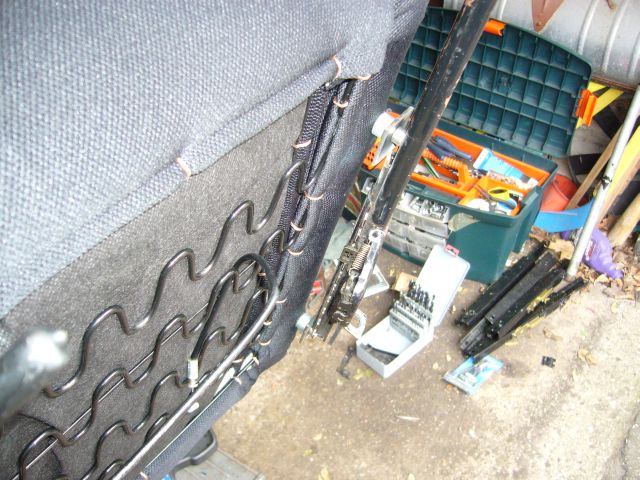
The rail was then removed from the seat and the mounting tabs fully welded and trimmed. While the fitting was very time consuming and tiring (lifting the seats in and out and in and out and in and out), it really wasn't that hard.
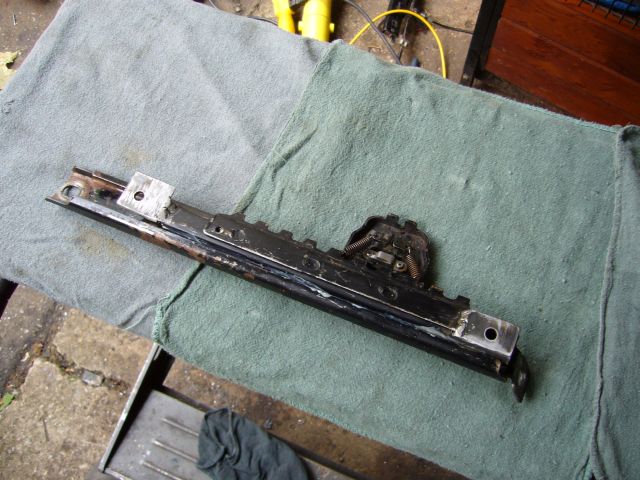
After all the welding, the seat fit quite well in the car. Two pieces of 1.5" square tubing were used as spacers on the outer rail to level the seat. Still needs a bit of tweaking to get it perfect, but for now it's fine. The rails still slide and both seats have full adjustment.
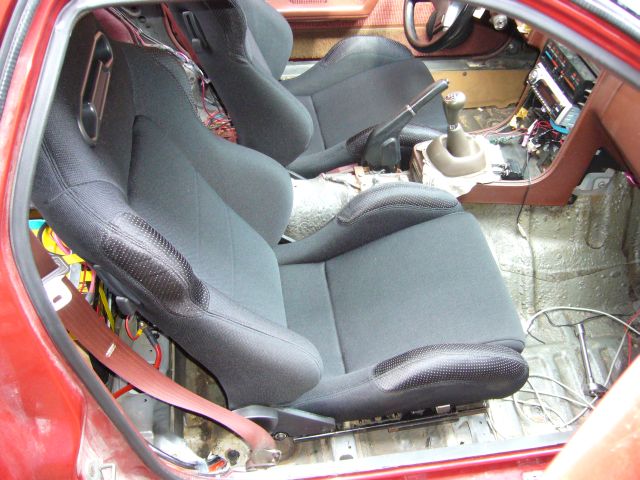
Time to quiet the car down a bit. Long trips in this car have always been very tiring due to road noise, exhaust noise, drivetrain noise and general rattles and squeaks. The factory sound deadening does a good job, but with the tar undercoating removed for the POR-15, the car was far noisier then before. I decided to cover the entire floor pan in Dynamat, so I purchased two 12 square foot rolls of the stuff and started applying to the floor pan and hatch area. I was surprised at how little coverage 12 square feet actually provided. Then again, when I drove the car with the floor and hatch partly covered, I was amazed at the difference it made. It sounded like a whole new car.
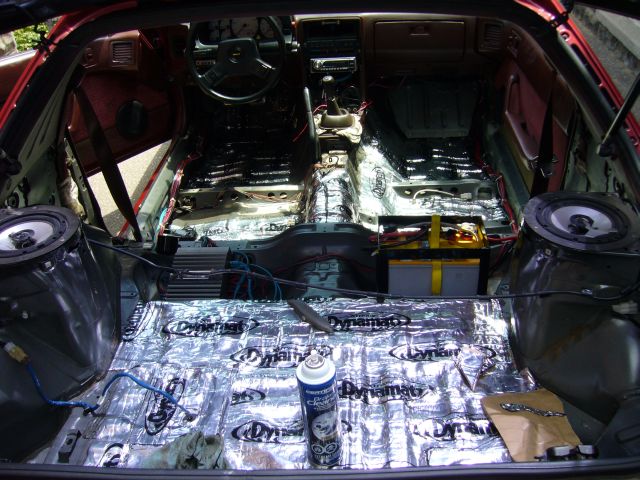
Since I ran out of Dynamat and the store was closed for the weekend, I installed a new set of door seals. The original set had disappeared 8 years ago when the car was painted and a lot of road noise and dust entered the car as a result. These new seals work well enough to make it hard to close the door due to air pressure and are well worth the investment. In addition to the plastic retaining clips I also used weatherstrip adhesive in the areas subject to sag.
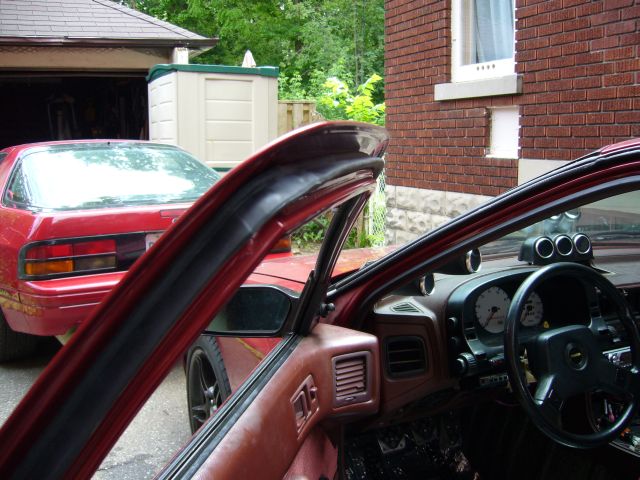
I also decided that I had lived long enough under the oppression of standard chrome wheel lug nuts, so I installed the anodized red replacements. Say what you will, I like them and they match the car. Also my original nuts were well past the point of worn out and appeared to be randomly salvaged from other cars as no two matched.
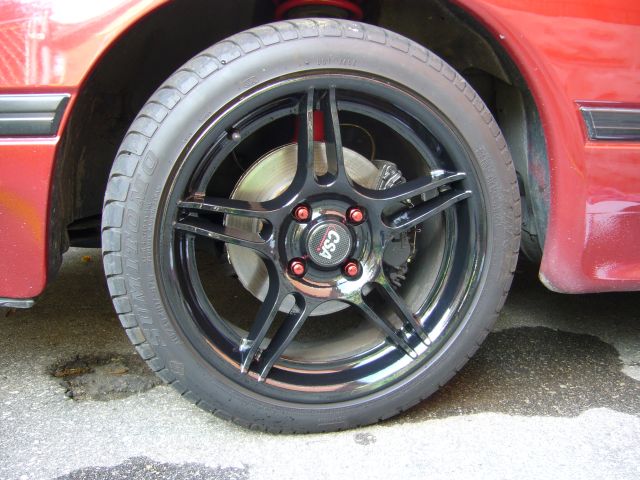
A big box of 36 square feet of Dynamat arrived for me at Jim's Speed a few days later. Continuing with the installation, I began covering the rest of the floor pan. This is actually very time consuming. To do a good job each piece must be carefully measured, cut, and then slowly laid onto a clean surface. Overlaps add a lot of thickness so I worked carefully and slowly to avoid them. All in all, this took about a week and a half.
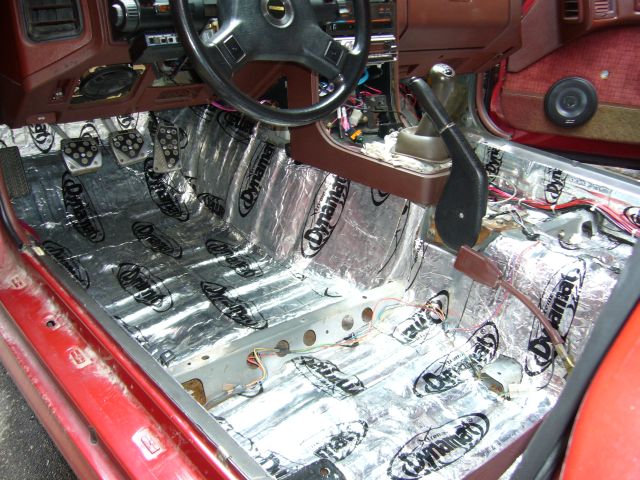
I covered the rear wheel wells completely including the shock towers, the rear storage bin area, and the full rear hatch floor.
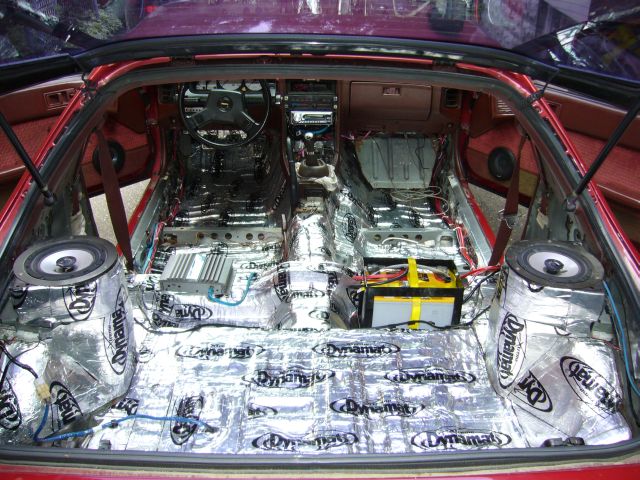
The entire passenger area was covered as well.
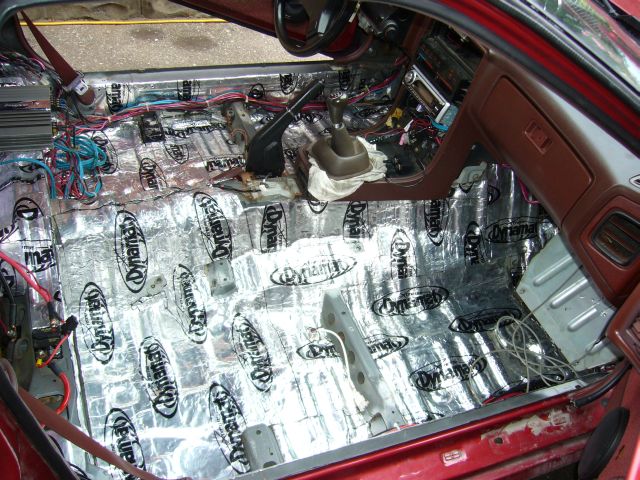
How much Dynamat did I use? Approximately 52 square feet. That is considerably more then I thought I would need. This stuff is expensive, but it is worth it. I probably added 50 LBs to the car and I must say that besides the turbo system, this is the best 50 LBS ever. I'm not exaggerating when I say that the car feels like a totally different vehicle. Gone is all the road noise, transmission noise, random rattles and shoe melting heat from the transmission tunnel. The car is now comfortable and far less tiring to drive, staying much cooler in operation. My only regret is that the stuff works so well that some of the wonderful turbo noise has been muffled. It's a worthwhile tradeoff though.
If you are going to do this I have one very important tip: poke all your bolt holes and upholstery clip holes as you lay the Dynamat. Hunting for them later with a pin really sucks.
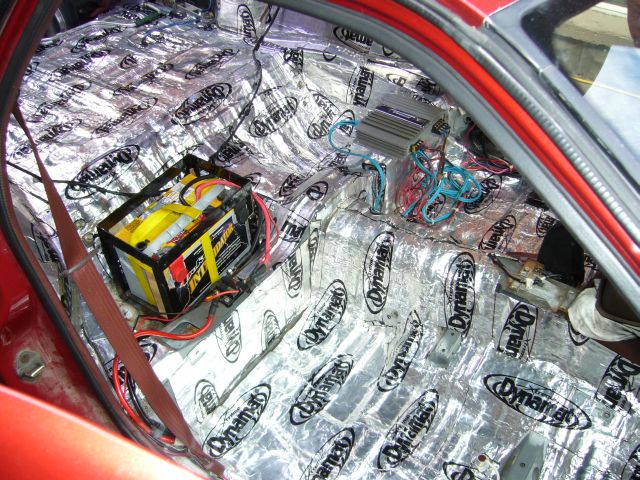
As I could have purchased several 2nd gens for the price of buying a new dealer carpet set, I decided to go with the ACC replacement carpet offered by Black Dragon. ACC advertises their products as "The highest quality aftermarket replacement carpet set in the industry". This may be true, but only because there are no other aftermarket carpet sets for the 2nd gen. Consider this: If the OEM carpet is a "10" on the quality scale, the ACC carpet is a "2". The major problem is fit. It doesn't! All aftermarket carpet sets are shipped folded in a box so they need time to stretch back out, so the lack of molding didn't initially worry me. They also all need to be trimmed, so I didn't worry about the excessive amount of material (better to have more then not enough). However as I began fitting the carpet I realized that there were some issues. First and most importantly, the moldings (for things like seat crossmembers, corners, etc.) were not distinct/deep enough. The seat crossmember moldings were far too shallow. This meant that the carpet had to be stretched to fit, creating massive wrinkles and bunching elsewhere. At first glance, the carpet looks great. I decided to do some trimming around the shifter area to avoid having to remove the dash. This worked out well.
